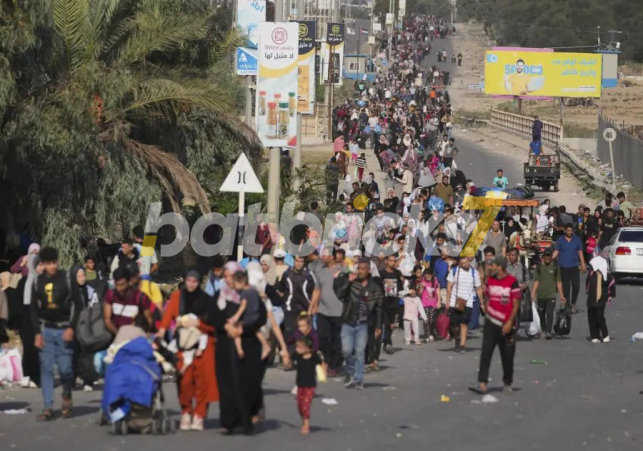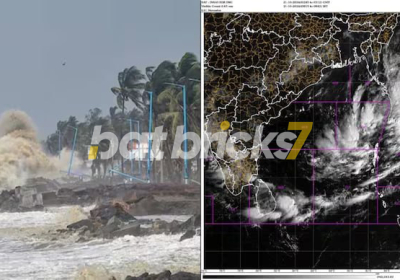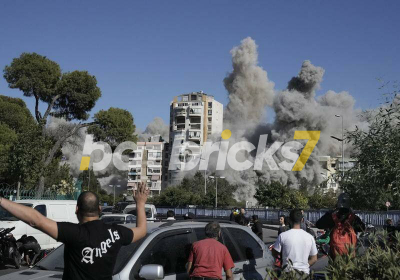Israel has committed war crimes and crimes against humanity in Gaza, including pursuing a deliberate policy of forcibly displacing people and denying them the right to return home

Israel is committing 'ethnic cleansing' amid mass forced displacements in Gaza, HRW report says
Israel has committed war crimes and crimes against humanity in Gaza, including pursuing a deliberate policy of forcibly displacing people and denying them the right to return home, according to a Human Rights Watch report released Thursday.
The report also labelled the likely permanent dispossession of Gazans in areas cleared by Israel to serve as buffer zones and security corridors as "ethnic cleansing".
Israel has carried out a violent and deliberate campaign of forced displacement against almost 2 million Palestinian civilians over the course of its bombardment and military occupation of the Gaza Strip since October 2023, according to a Human Rights Watch report released Thursday.
The report, which maintains that these policies amount to war crimes and crimes against humanity, also accused the Israeli government of carrying out ethnic cleansing against Palestinians in areas where the Israel Defense Forces (IDF) have razed swaths of homes and other civilian infrastructure to make way for "buffer zones" and "security corridors" throughout the besieged enclave.
In the 13 months since armed Palestinian groups led by Hamas launched deadly attacks against Israel on October 7, 2023, Israel's devastating retaliatory campaign in Gaza has driven roughly 1.9 million Palestinians from their homes, according to the United Nations Emergency Relief Coordinator almost nine-tenths of the people living in the Strip.
These mass population transfers began in the first days of Israel's bombardment when the IDF ordered more than a million people living in the north to leave their homes and head to the southern half of the enclave within just 24 hours.
As more and more civilians have been driven from their homes to scattered "safe zones" across the Gaza Strip, the IDF has carried out controlled demolitions of civilian infrastructure, which alongside Israel's relentless bombing campaign of Gaza has destroyed tens of thousands of houses as well as hospitals, schools and vast stretches of agricultural land, Human Rights Watch said.
This devastation, the report says, risks robbing displaced civilians of the right to return to their homes when the fighting, one day, comes to an end.
The Israeli government has consistently maintained that its mass evacuation orders are intended to allow the IDF to fight Palestinian militant groups while minimising civilian casualties in the once densely populated Strip.
But Caitlin Procter, a political anthropologist and part-time professor at the Migration Policy Centre, said that repeated reports of Israeli attacks on its own designated safe zones and evacuation routes - also verified and highlighted in the Human Rights Watch report - painted a different picture.
"I think first and foremost we absolutely have to stop repeating this word 'evacuation'," she said. "Israeli officials have obviously continuously used this word, but actually they've completely misused the word over the last year in the way that they've forced Palestinians to displace from one place to another, upwards of ten times in some cases."
"The word 'evacuation', we associate it with safety with moving from a place of danger to a place of safety for a temporary period before then returning home. And every aspect of that is false in this case," she said.
"Not only is there nowhere safe, but we also know from reports that these so called safe zones have then been explicitly targeted by the Israeli military once people were forced to go there, and then not only that but these areas that people have been displaced from have been completely obliterated. So there is no possibility that they can then return home."
In Gaza, where as many as fourth-fifths of the population are either themselves refugees or the descendants of refugees, this threat of once again being permanently driven from their homes evokes the grim days of what Palestinians call the Nakba, or catastrophe.
More than 75 years ago, hundreds of thousands of Palestinians fled their homes following the outbreak of war between a nascent Israel and neighbouring Arab states in 1948 that marked Israel's founding.
Yair Wallach, reader in Israeli studies at SOAS, University of London, said that the fear of once again being driven from their homes at gunpoint was very real throughout the Strip.
"Most of Gaza's population are originally refugees from what has been Israel since 1948 - the overwhelming majority," he said.
"Some of them fled or were expelled during the war, some of them even expelled into Gaza after the war. The defining experience of the population of the Gaza Strip is one of being descendants of this mass displacement that's barred them from returning.
So when people talk about Jabaliya or other places in the Gaza Strip that are being depopulated now, these were originally refugee camps that became homes The memory of 1948 looms large."
The report, which only covers events in Gaza until the end of August 2024, comes a little over a month after Israeli forces issued fresh evacuation orders across the Strip's far north, calling on more than 400,000 people to once again flee southwards as the IDF prepared to lay siege to the northern areas bordering Israel.
The military has since cut off all food and aid deliveries to the zone as it battles what it describes as Hamas militants who have regrouped there, causing a UN-backed report to warn that the tens of thousands of civilians believed to be trapped there could be facing imminent famine.
A 30-day deadline issued by the US urging Israel to allow more humanitarian aid to enter the Strip passed without issue this week, with the outgoing Biden administration saying it would not be halting military support to Netanyahu's government.
Residents have said they worry that the recent mass evacuation orders and Israeli troop movements in Jabaliya, Beit Lahiya and Beit Lanoun in Gaza's north are the first step towards Israel building an extended "buffer zone" free of Palestinians a policy that Human Rights Watch said would amount to ethnic cleansing.
Satellite photos already show a one-kilometre-wide "buffer zone" lying along Gaza's eastern border with Israel that has been cleared of almost all standing structures.
Procter, who conducted extensive fieldwork around forced migration in the Gaza Strip before the October 7, 2023, attacks, said that residents' fears could very well be justified.
"In the last year, since last October, there's been extremely explicit calls for the permanent depopulation of Gaza among senior Israeli officials there are countless examples of this to draw on and the international community has consistently failed to respond to this," she said.
"And we see this now with what's happening in Jabaliya, and there's been these reports of senior Israeli officials very clearly saying that there will be no return to northern Gaza. So these fears surrounding permanent deportation, permanent depopulation, they're extremely well-founded and historically grounded."
It is in these purported "buffer zones" as well as the 4-kilometre-wide "Netzarim Corridor" that Israel has cut through the centre of the Strip and the "Philadelphi Corridor" that lies along the Egyptian border - that Human Rights Watch has warned Israeli could be carrying out a targeted campaign of ethnic cleansing.
The report features satellite imagery showing the extensive demolition of buildings of all kinds around these roads, which Israel has dubbed "security corridors".
Nadia Hardman, Human Rights Watch's refugee and migrant rights researcher and the report's principal author, said that while the term was not recognised under international law, she believed that it was an accurate description of what their research had unearthed.
"It's just very clear in those areas that people have been forced out, they won't be allowed to return.
That also meets another definition which is used in international law, even if it doesn't have an international legal definition, and it's known as ethnic cleansing," she said.
"And it usually comes when you combine acts of forced displacement, which is the part which is moving people by violent and terror inspiring means, and we also say that persecution should be investigated as a war crime as well in this report.
When you get a combination of these together is when it is incumbent on us to also consider ethnic cleansing, which is what we did."
Wallach also used the term in his description of the IDF's recent evacuation orders in Gaza's north.
"What you have in the northern part of the Strip now is basically a very explicit operation of ethnic cleansing, where the areas just north of Gaza City which is Jabaliya and Beit Lahiya and others, people were not only told to leave, as people were told even a year ago, but also it was clear that if anyone stayed because they can't move, or they don't trust the Israelis not to shoot them en route and so forth, anyone that stays will be seen as a combatant and either be starved to death or killed that was a very explicit threat," he said.
"And you have Israeli military officials saying that no one is ever going to be allowed back there, that there's no intention to allow people back into that area again, and the suggestion that it will be marked for Jewish settlement.
So this is the most explicit attempt of permanent ethnic cleansing, and the permanent removal of the population from there."
Dena Qaddumi, a fellow in city design and social science at the London School of Economics, said that it was hard to understand the full impact of what this policy of mass displacement had had on the Palestinians of Gaza.
"The mass destruction of Gaza aims to make the territory uninhabitable, and in doing so force Palestinians in Gaza to migrate elsewhere, if they desire to live, once overt fighting has ceased," she said.
"Forced displacement through mass destruction and the subsequent denial of the right of return seek to destroy the very peoplehood of Palestinians, which is rooted in the connection with the lands, villages, cities and indigenous communities of Palestine."







